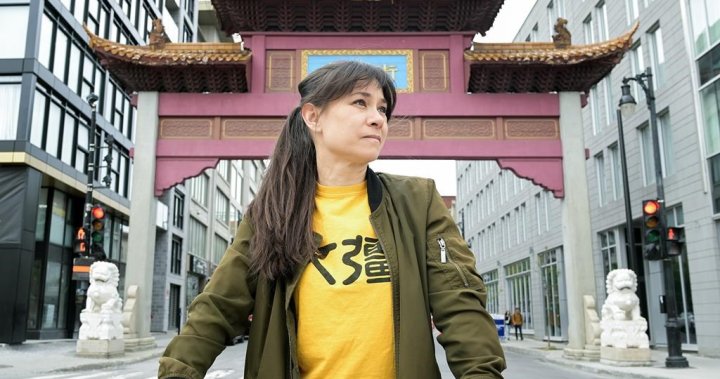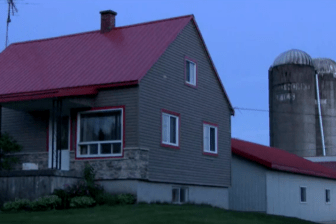Chinatowns across North America don’t just share a similar look — they also face similar existential threats and David-versus-Goliath-like battles for survival.
Whether it’s residents of New York City’s Chinatown protesting a proposed mega jail in their community, or Montreal’s Chinese diaspora fighting to save heritage buildings or struggling to keep family restaurants alive during COVID-19, these common threads are a recurring motif of Karen Cho’s documentary “Big Fight in Little Chinatown.”
Cho, a fifth-generation Chinese Canadian with roots in the Chinatowns of Montreal and Vancouver, documents how these urban pockets of Chinese culture across North America are facing similar pressures from gentrification. In an interview, Cho said the neighbourhoods are prime targets for redevelopment due to their age and proximity to downtown, but also to what she calls “the intersection of racism and urban planning.”
Urban renewal projects, she said, are disproportionately located in racialized or immigrant communities.
“Again and again and again, wherever the Chinatown would be, these are neighbourhoods where freeways are driven through them, light rails and stadiums dropped onto them, prisons put into them,” she said in a phone interview.
“(These are) the priorities or the choices that the city makes of who gets to stay and who gets displaced.”
Cho’s hometown of Montreal is a focal point of the documentary, which she said wasn’t part of her original plan. She had long been concerned about the luxury condo towers sprouting up around Montreal’s Chinatown gates, but her initial conception was to focus on the bigger Chinatowns on the continent, in places like Vancouver and New York.

That changed in 2021, when news broke that a developer purchased buildings on one of the most historic blocks of Montreal’s Chinatown — including the Wings building, named for a noodle factory that has long operated there.
“The Wings noodle building got bought, and I had a really tough time,” she said. “I couldn’t reconcile this idea that I was gonna film the erasure of my own Chinatown.”
Cho was a member of the Montreal Chinatown working group, formed in response to development pressures. In early 2022, the activists won a significant battle when the province signed an official notice to grant heritage status to the “institutional core” of Chinatown as well as to two of its best-known buildings, including the Wings factory. That status protects buildings from being demolished or significantly altered without permission.
More on Canada
She said the move was a good first step in protecting what’s left of Montreal’s Chinatown, which she said was “one condo project away” from complete erasure after decades of urban redevelopment projects that had already led to the demolition of every building where her family had ever lived or worked.
However, Cho’s film makes it clear that saving Chinatowns is about more than preserving buildings or their facades.
Much of her documentary shows the day-to-day lives of Chinatown residents in places like Montreal, Vancouver and New York: business owners preparing food to sell, young people rehearsing a dragon dance, seniors gathering in parks. She said she wanted to show that Chinatowns are not just places selling souvenirs and dim sum to tourists, but also providing important community spaces, activities and culture for the people who live there.

Equally important, she said, was to break the “tourist facade” and tell the story from the residents’ point of view. “I follow a lot of intergenerational businesses, people that have been there for a long time, but instead of us as tourists looking through the shop window, it’s like they’re actually looking from the inside out to see the changes in their neighbourhood.”
Cho’s film tour has taken her across North America, with stops in Montreal, Vancouver, Winnipeg and Los Angeles. Stops include a showing at the Edmonton Chinatown Multi-Cultural Centre on Sunday and at Hot Docs cinema in Toronto on May 30. The documentary is also scheduled for broadcast on TVO and Radio-Canada.
She said most of her screenings take place in Chinatowns, where she’s had the opportunity to speak with community leaders about their efforts to preserve their districts. The response, she said, has left her hopeful.
“There is a 150-year tradition of resistance in those neighbourhoods, and I saw that firsthand,” she said. Seeing those “pockets of resistance” has reminded her of the strength within those communities, despite the odds stacked against them.
“Chinatown really is like this kind of blade of grass that grows in the cement,” she said. “You know, it’s not supposed to be there, but it’s thriving.”
© 2023 The Canadian Press



